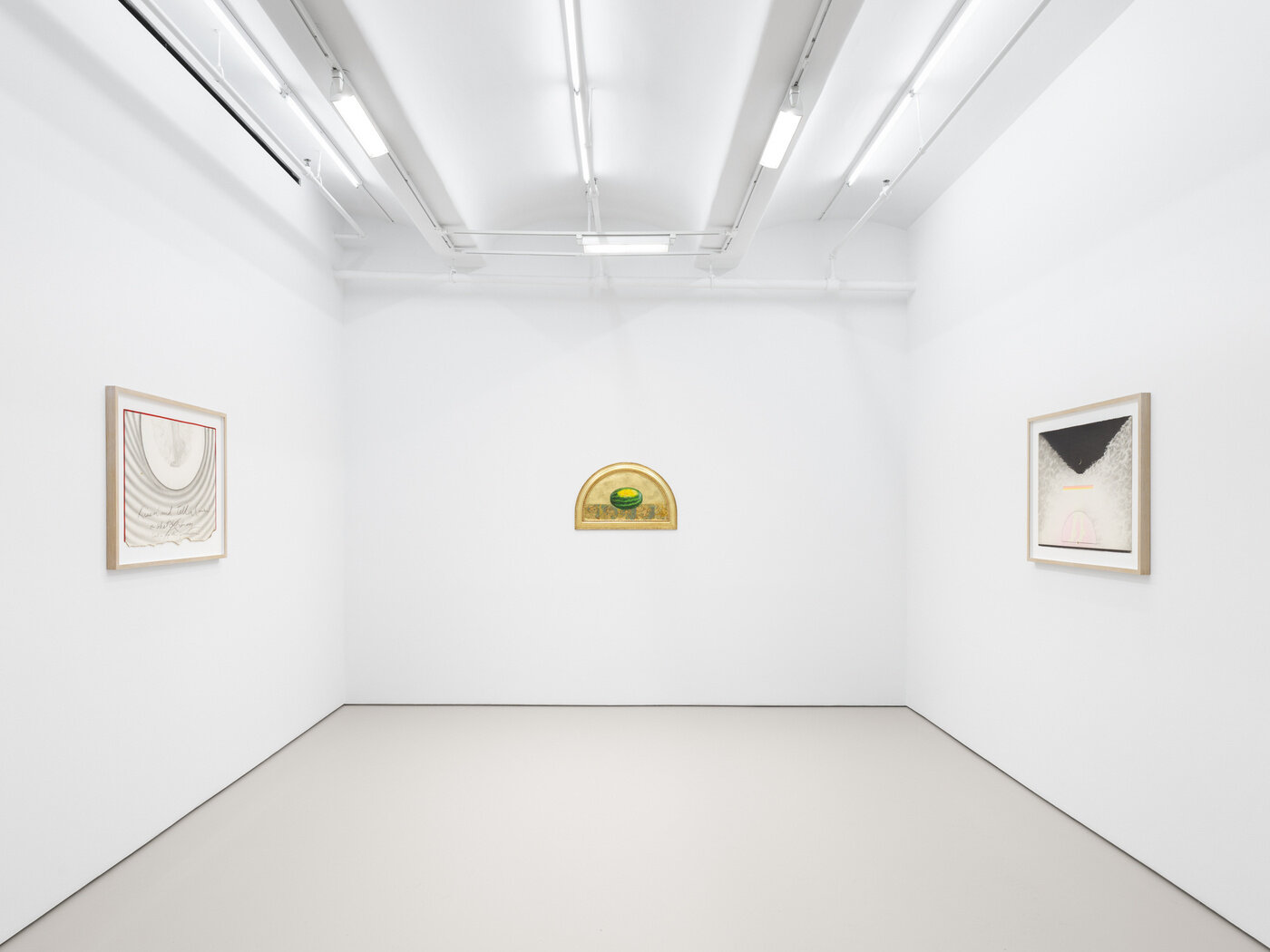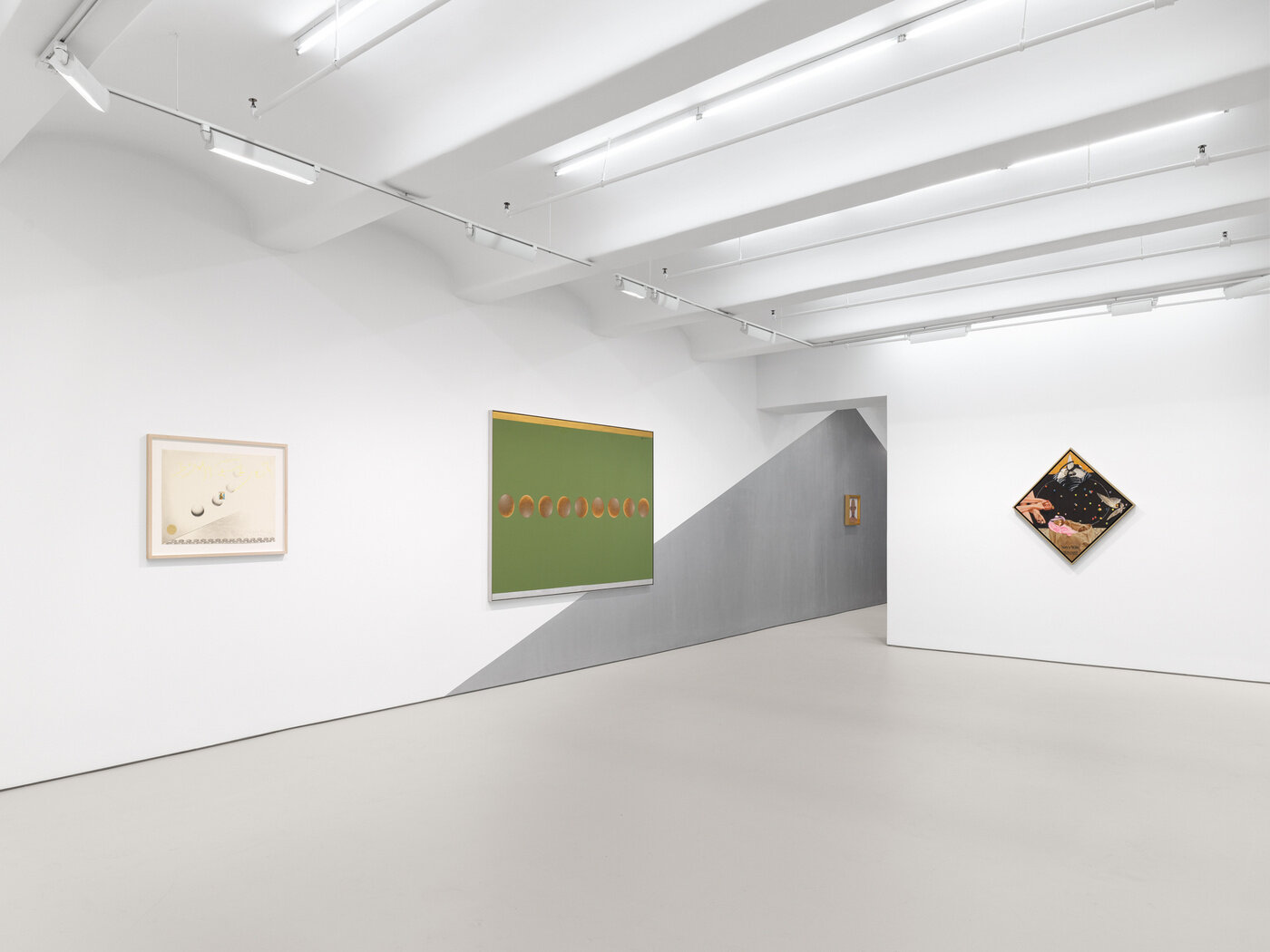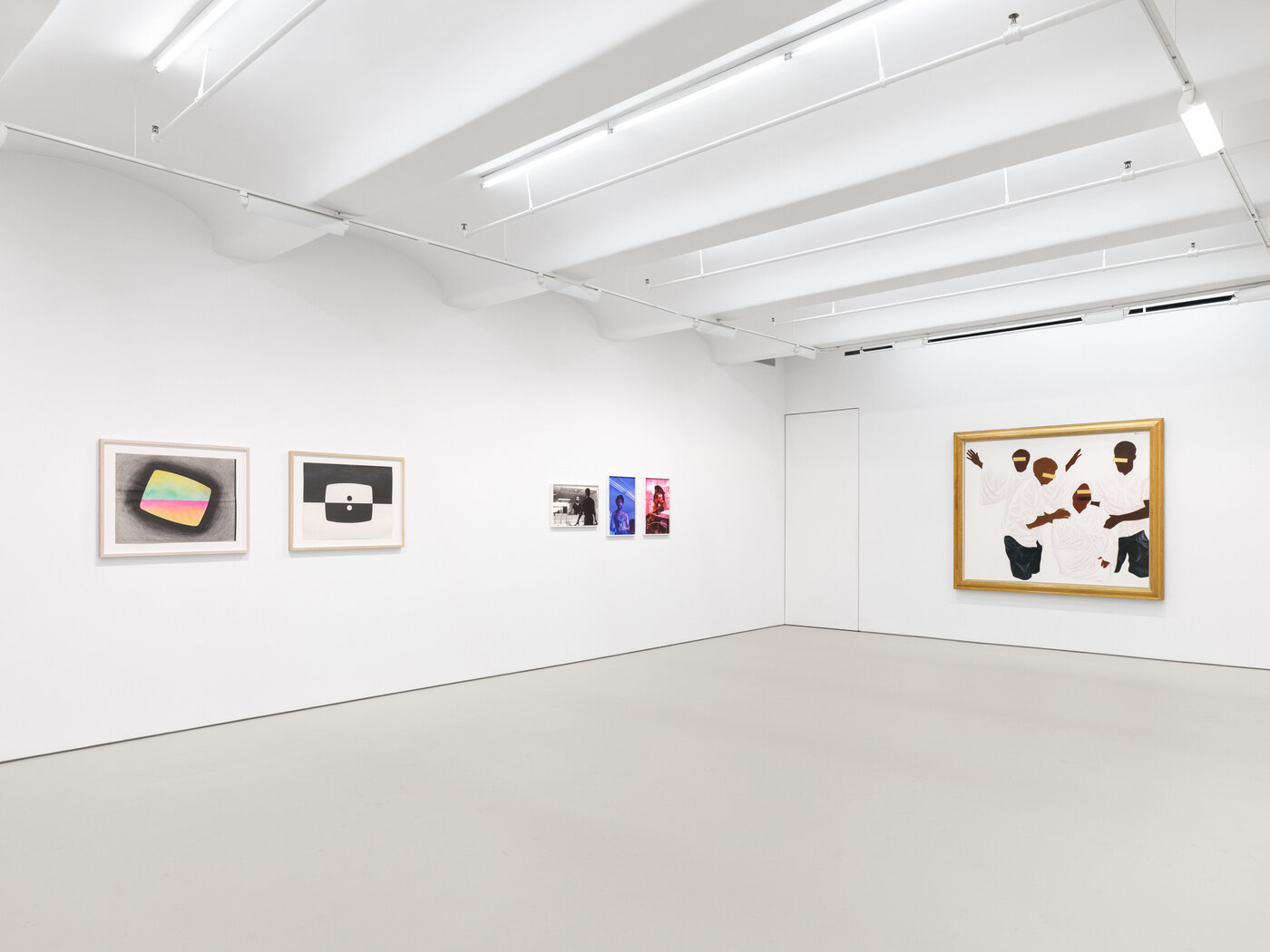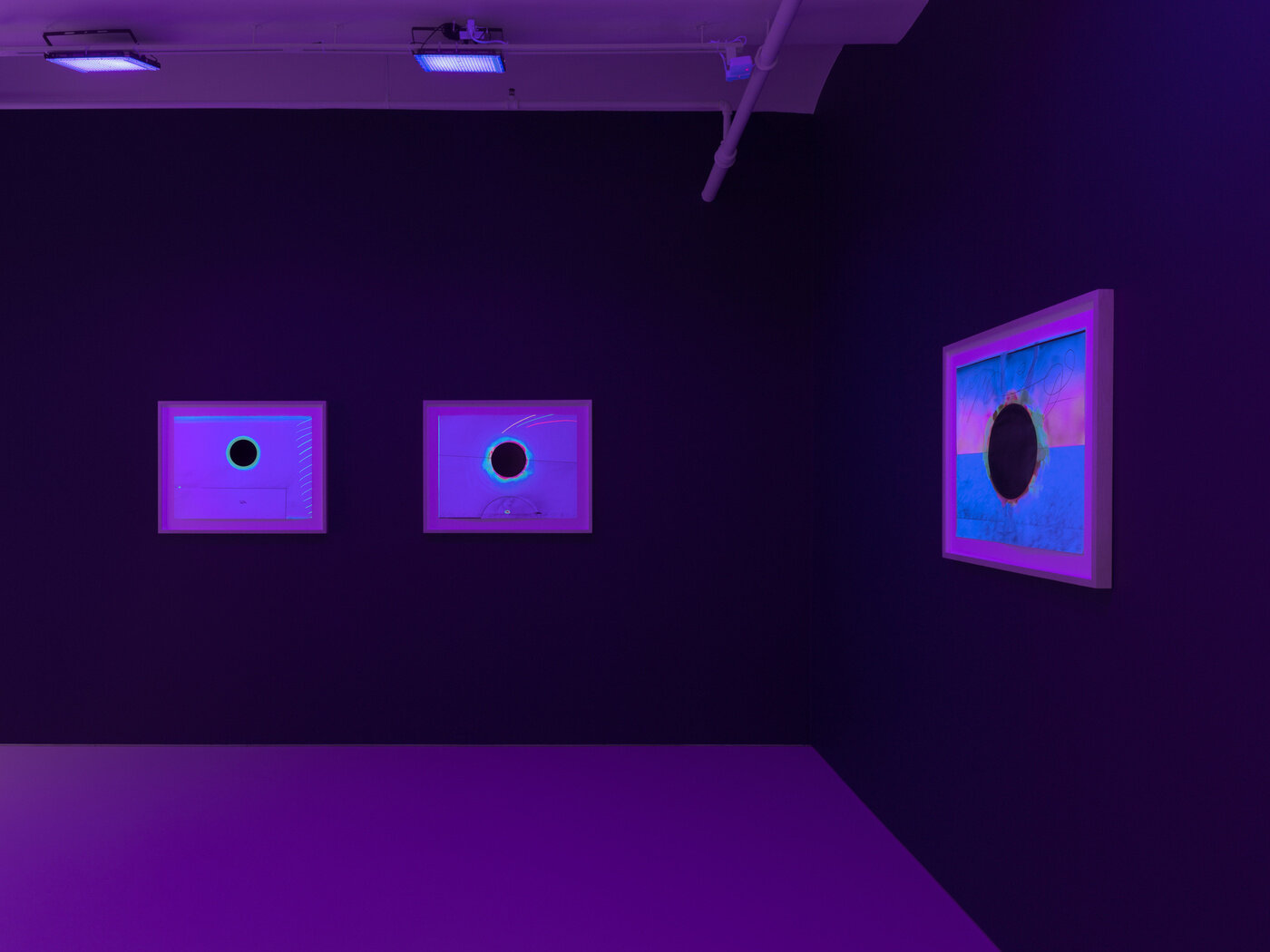Barkley L. Hendricks: Space is the Place
Works (Tap to zoom)
Press Release
Barkley L. Hendricks
Space is the Place
513 W 20th Street, New York, NY
January 9 – February 22, 2025
Opening reception Thursday, January 9th from 6–8PM
PRESS
Jack Shainman Gallery is pleased to present Space is the Place, highlighting the profound and visionary works of renowned artist Barkley L. Hendricks, curated by Elisabeth Sann. A playlist made in collaboration with Soul Jazz Records will accompany the exhibition. Space is the Place offers an exploration into the relationship between celestial bodies and the human experience. This connection sets the stage for an immersive experience that merges visual art, music, and philosophical exploration of the cosmos, and the future. At the heart of this exhibition is the title itself, Space is the Place, which references the groundbreaking 1972 film by jazz composer and Afrofuturist icon, Sun Ra.
The cultural and artistic movement of Afrofuturism blends together science fiction, African traditions, contemporary Black experiences, and futuristic visions to reimagine the future for Black people. In his film, Space is the Place, Sun Ra — a pioneer of Afrofuturism — transports himself and his followers to another planet, symbolizing a departure from the oppressive realities of life on Earth and an embrace of a new realm of possibilities. Hendricks, acting as a constant observer, similarly employs the motifs of Afrofuturism to explore contemporary Black identity in the wake of oppression. By positioning symbols that allude to the stars, planets, and cosmic elements; Hendricks’ works act as catalyst for empowerment and escapism.
Best known for his striking portraits, Hendricks captures figures in moments of defiant dignity, becoming tools of resistance just by existing. His works on paper employ celestial and cosmic imagery to reframe these moments of personal power, suggesting that the human experience is not simply encapsulated by figurative representation nor grounded in earthly struggles. Instead, Hendricks implies that it is expansive, limitless, and connected to the stars – in some cases echoing the aspirations of the Afrofuturist movement that seeks to create new realities for Black people that are free from the constraints of the past.
In his works on paper from the 1970s, Hendricks utilizes motifs revolving around ancient Egyptian images of the pyramids and sun, which for Sun Ra represent more than just references to history. Rather, they are reimagined as symbols of validation, resilience, and hopefulness for the future.
The exhibition’s final gallery presents a selection of drawings from Hendricks’ eclipse series shown under black light. Eclipses appear throughout many of Hendricks’ works on paper, a nod to the three solar eclipses that passed over the Northeastern United States in the 1970s. However, seeing these works under black light is revelatory, transforming them into transcendant meditations on the circle as perfect object and symbol of the cosmos, recalling the explorations of Hilma af Klint.
By foregrounding his practice in observation, acknowledging the contextual background of Hendricks’ work featured in Space is the Place is paramount. Most of the works on display were made in the 1970s, a politically tumultuous decade that saw the de-escalation of the controversial Vietnam War, the energy crisis, and the Watergate scandal. The 1970s also saw major breakthroughs in space exploration, advancements made in physics, and in Lagos, Nigeria, FESTAC ’77: the Second World Black African Festival of Arts and Culture — in which both Hendricks and Sun Ra participated. Today, FESTAC ’77 is looked upon as a manifestation and celebration of Afrofuturist ideals and aesthetics, and a coming together of Black creativity.
Hendricks famously said he “paints what he sees,” and created work that mirrored the context of the times. By juxtaposing Hendricks’ earthly portraits with the vast, abstract imagery of the cosmos; Space is the Place presents works in dialogue between the personal and the universal, the grounded and the transcendent. In these works, viewers are shown the investigation of space as something beyond earthly realms; a quest for discovering the unknown, and the limitlessness of transcending the Earth’s atmosphere. Both elements of Hendrick’s practice — the portraits and the cosmos that intertwine throughout Space is the Place — create a space where Black identity is simultaneously grounded in history and connected to a limitless future.
In an equally tumultuous time, Space is the Place aims to offer momentary escape from our current reality, linking the optimistic transcendence of space exploration in the 1970s with the endless, astonishing alternative futures offered by the cosmos.
Barkley L. Hendricks (b. Philadelphia, PA, 1945; d. New Haven, CT, 2017) was an American artist who lived and worked in New London, Connecticut, for most of his lifetime. He attended the Pennsylvania Academy of the Fine Arts and earned both his BFA and MFA from Yale University in 1972. Hendricks’ work has been prominently shown in significant exhibitions such as Giants: Art from the Dean Collection of Swizz Beatz and Alicia Keys, Brooklyn Museum, Brooklyn, NY (2024); High Museum, Atlanta, GA (2024-2025). Recent solo exhibitions include Barkley L. Hendricks: Portraits at the Frick, The Frick Collection, New York, NY (2023 – 2024), Barkley L. Hendricks in New London at the Lyman Allyn Art Museum, New London, CT (2023) and My Mechanical Sketchbook - Barkley L. Hendricks & Photography, Rose Art Museum, Waltham, MA, (2022). Other major exhibitions include Soul of a Nation: Art in the Age of Black Power, presented at the Tate Modern, London, UK (2017); Crystal Bridges Museum of Art, Bentonville, AR (2018); Brooklyn Museum of Art, Brooklyn, NY (2019); The Broad, Los Angeles, CA (2019); and the Museum of Fine Arts, Houston, TX (2020). Birth of the Cool, a major solo exhibition, was organized by Trevor Schoonmaker at the Nasher Museum of Art at Duke University, Durham, NC and traveled to four subsequent institutions (2008-2010).
Barkley L. Hendricks is included in numerous public collections within the United States and abroad, including the Museum of Modern Art, New York; Whitney Museum of American Art, New York; National Gallery of Art, Washington, D.C; Tate Modern, London, UK; Los Angeles County Museum of Art, Los Angeles, CA; The Studio Museum in Harlem, New York, NY; Philadelphia Museum of Art, Philadelphia, PA; Nasher Museum of Art at Duke University, Durham, NC; and Harvard Art Museums, Cambridge, MA.
Gallery hours are Tuesday to Saturday from 10am to 6pm. For press inquiries, please reach out to the team at ALMA. For other inquiries, please contact the gallery at info@jackshainman.com.




